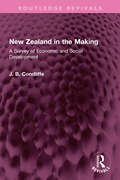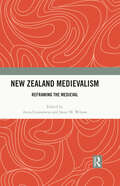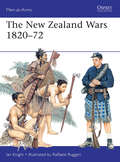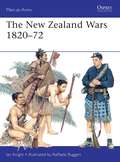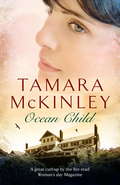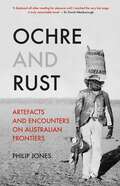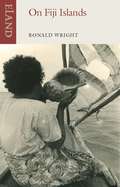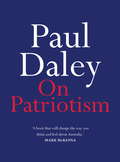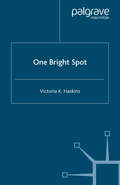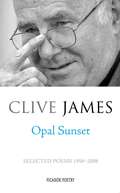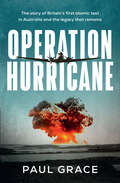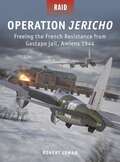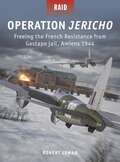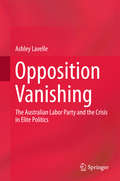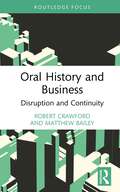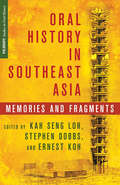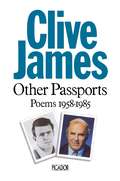- Table View
- List View
New Zealand in the Making: A Survey of Economic and Social Development (Routledge Revivals)
by J. B. CondliffeFirst published in 1930, New Zealand in the Making is an economic history of the democratic experiments in New Zealand. The geography, population, government ownership of public utilities, compulsory arbitration, pensions and all other factors have been covered in detail. The book will be of interest to anyone keen on learning about New Zealand as well as to students of economy, history, agriculture, and government.
New Zealand in the Making: A Survey of Economic and Social Development (Routledge Revivals)
by J. B. CondliffeFirst published in 1930, New Zealand in the Making is an economic history of the democratic experiments in New Zealand. The geography, population, government ownership of public utilities, compulsory arbitration, pensions and all other factors have been covered in detail. The book will be of interest to anyone keen on learning about New Zealand as well as to students of economy, history, agriculture, and government.
New Zealand Medievalism: Reframing the Medieval
by Anna Czarnowus Janet M. WilsonThis volume maps the phenomenon of medievalism in Aotearoa, initially as an import by the early white settler society, and as a form of nation building that would reinforce Britishness and ancestral belonging. This colonial narrative underpins the volume’s focus on the imperial relationship in chapters on the academic study of the Middle Ages, on medievalism in film and music, in manuscript and book collections, and colonial stained glass and architecture. Through the alternative 21st-century frameworks of a global Middle Ages and Aotearoa’s bicultural nationalism, the volume also introduces Maori understandings of the ancestral past that parallel the European epoch and, at the opposite end of the spectrum, the phenomenon of global right-wing medievalism, as evidenced in the Alt-right extremism underpinning the Christchurch mosque attack of 2019.The 11 chapters trace the transcultural moves and networks that comprise the shift from the 20th-century study of the Middle Ages as an historical period to manifestations of medievalism as the reception and interpretation of the medieval past in postmedieval times. Collectively these are viewed as indications of the changing public perception about the meaning and practice of the European heritage from the colonial to contemporary era.The volume will appeal to educationists, scholars, and students interested in the academic history of the Middle Ages in New Zealand; enthusiasts of film, music, and performance of the medieval; members of the public interested in Aotearoa’s history and popular culture; and all who enjoy the colourful reinventions of medievalism.
New Zealand Medievalism: Reframing the Medieval
This volume maps the phenomenon of medievalism in Aotearoa, initially as an import by the early white settler society, and as a form of nation building that would reinforce Britishness and ancestral belonging. This colonial narrative underpins the volume’s focus on the imperial relationship in chapters on the academic study of the Middle Ages, on medievalism in film and music, in manuscript and book collections, and colonial stained glass and architecture. Through the alternative 21st-century frameworks of a global Middle Ages and Aotearoa’s bicultural nationalism, the volume also introduces Maori understandings of the ancestral past that parallel the European epoch and, at the opposite end of the spectrum, the phenomenon of global right-wing medievalism, as evidenced in the Alt-right extremism underpinning the Christchurch mosque attack of 2019.The 11 chapters trace the transcultural moves and networks that comprise the shift from the 20th-century study of the Middle Ages as an historical period to manifestations of medievalism as the reception and interpretation of the medieval past in postmedieval times. Collectively these are viewed as indications of the changing public perception about the meaning and practice of the European heritage from the colonial to contemporary era.The volume will appeal to educationists, scholars, and students interested in the academic history of the Middle Ages in New Zealand; enthusiasts of film, music, and performance of the medieval; members of the public interested in Aotearoa’s history and popular culture; and all who enjoy the colourful reinventions of medievalism.
The New Zealand Wars 1820–72 (Men-at-Arms #487)
by Ian Knight Mr Raffaele RuggeriBetween 1845 and 1872, various groups of Maori were involved in a series of wars of resistance against British settlers. The Maori had a fierce and long-established warrior tradition and subduing them took a lengthy British Army commitment, only surpassed in the Victorian period by that on the North-West Frontier of India. Warfare had been endemic in pre-colonial New Zealand and Maori groups maintained fortified villages or pas. The small early British coastal settlements were tolerated, and in the 1820s a chief named Hongi Hika travelled to Britain with a missionary and returned laden with gifts. He promptly exchanged these for muskets, and began an aggressive 15-year expansion. By the 1860s many Maori had acquired firearms and had perfected their bush-warfare tactics. In the last phase of the wars a religious movement, Pai Maarire ('Hau Hau'), inspired remarkable guerrilla leaders such as Te Kooti Arikirangi to renewed resistance. This final phase saw a reduction in British Army forces. European victory was not total, but led to a negotiated peace that preserved some of the Maori people's territories and freedoms.
The New Zealand Wars 1820–72 (Men-at-Arms)
by Raffaele Ruggeri Ian KnightBetween 1845 and 1872, various groups of Maori were involved in a series of wars of resistance against British settlers. The Maori had a fierce and long-established warrior tradition and subduing them took a lengthy British Army commitment, only surpassed in the Victorian period by that on the North-West Frontier of India. Warfare had been endemic in pre-colonial New Zealand and Maori groups maintained fortified villages or pas. The small early British coastal settlements were tolerated, and in the 1820s a chief named Hongi Hika travelled to Britain with a missionary and returned laden with gifts. He promptly exchanged these for muskets, and began an aggressive 15-year expansion. By the 1860s many Maori had acquired firearms and had perfected their bush-warfare tactics. In the last phase of the wars a religious movement, Pai Maarire ('Hau Hau'), inspired remarkable guerrilla leaders such as Te Kooti Arikirangi to renewed resistance. This final phase saw a reduction in British Army forces. European victory was not total, but led to a negotiated peace that preserved some of the Maori people's territories and freedoms.
Ocean Child
by Tamara McKinley1920. Having disobeyed the wishes of her aristocratic family, Lulu Pearson, a young and talented Tasmanian sculptress, finds herself alone in London in the wake of the Great War. The future is looking bright until, on the eve of her first exhibition, Lulu learns she has inherited a racing colt called Ocean Child from a mysterious benefactor, and she must return to her homeland to claim him. Baffled by the news, Lulu boards a ship to Tasmania to uncover the truth behind the strange bequest, but it seems a welcome return is more than she can hope for. Unbeknownst to Lulu, more than a few fortunes ride on Ocean Child's success - it seems everyone from her estranged mother to the stable hands has a part to play, and an interest in keeping the family secrets buried.
On Fiji Islands
by Ronald WrightIn little more than a century, Fiji islanders have made the transition from cannibalism to Christianity, from colony to flourishing self-government, without losing their own culture. As Ronald Wright observes, societies that do not eat people are fascinated by those that did, and often used this fact as an excuse to conquer, kill and enslave. Touring cities bustling with Indian merchants, quiet Fijian villages and taking part in communal ceremonies, he attributes the remarkable independence of Fiji to the fact that the indigenous social structure remains intact and eighty-three per cent of the land remains in local hands. Wright tells their story with wit and evident pleasure.
On Patriotism (On Series)
by Paul DaleyHow has militarisation come to define Australian valour? Why has the long shadow of World War I dominated our sense of patriotism?ON PATRIOTISM explores what it really means to love and serve your country. Paul Daley contemplates ways to escape the cultural binds that tie us to Anzac, British settlement and flag-waving.'Straight from the heart and deeply informed. With Indigenous culture at its centre, Paul Daley has given us a patriotism for the twenty-first century.' PROFESSOR MARK McKENNA
One Bright Spot
by V. HaskinsFor every Aboriginal child taken away by the state governments in Australia, there was at least one white family intimately involved in their life. One Bright Spot is about one of these families - about 'Ming', a Sydney wife and mother who hired Aboriginal domestic servants in the 20s and 30s, and became an activist against the Stolen Generations policy. Her story, reconstructed by her great-granddaughter, tells of a remarkable, yet forgotten, shared history.
Opal Sunset: Selected Poems 1958-2008
by Clive JamesOpal Sunset gathers together fifty years of Clive James’s poetry, and will undoubtedly enhance his reputation as one of the most versatile and accomplished of contemporary writers. Indeed – as with Other Passports, The Book of My Enemy and Angels Over Elsinore before it – Opal Sunset proves Clive James to be as well suited to the intense demands of the poetic form as he is to prose. Readers new to his verse will not be surprised to find him a master of the comic set-piece and surreal excursion, while those who are familiar with his previous collections will already be aware of his fluency and apparently effortless style, his technical skill and thematic scope. Ultimately, however, the highest recommendation one can give is that Clive James is, in these poems, unmistakably himself – an assured and dazzling wordsmith.
Operation Hurricane: The story of Britain's first atomic test in Australia and the legacy that remains
by Paul Grace'I remember seeing a flash, I turned around and heard a roar like a train approaching in a tunnel. Then a tremendous crack like a whiplash passed directly overhead. I saw a mushroom cloud ... There was black and white smoke, orange and red flames ascending through the centre of the mushroom.' RAN Able Seaman Vince Douglas, participant in Operation HurricaneAt 8.00 a.m. on Friday 3 October 1952, Britain's first atomic bomb was detonated in the hold of a surplus frigate, HMS Plym, moored in the Montebello Islands, 50 miles off the North West Coast of Western Australia. The blast vaporised the Plym, produced a mushroom cloud 2 miles high, and covered the islands and parts of the Australian mainland with fallout. The test, codenamed Operation Hurricane, was the culmination of years of top-secret planning in London and Canberra and months of clandestine preparations at the site. One of the largest peacetime military operations in Australian history, its success shifted the balance of power in the Cold War and briefly rejuvenated the fading British Empire.Painstakingly pieced together from declassified government documents and first-person accounts by surviving participants, Operation Hurricane tells the story of Britain's first nuclear test from the point of view of the men on the ground: soldiers, sailors, airmen and civilians. It delves into the historical context of the Cold War and examines the controversial legacy of the atomic tests, including the impact of fallout on servicemen, Aboriginal peoples and the environment, and Australia's relationship with the United Kingdom.
Operation Jericho: Freeing the French Resistance from Gestapo jail, Amiens 1944 (Raid)
by Robert LymanThis is the story of Operation Jericho, the spectacular prison break staged by an elite group of British, Australian and New Zealand bomber pilots, who flew a daring low-level mission to blow holes in the walls of Amiens jail and free French Resistance prisoners under the sentence of death during World War II.With D-Day looming, early 1944 was a time of massive intelligence activity across northern France, and many résistants were being captured and imprisoned by the Germans. Among the jails full of French agents was Amiens, where hundreds awaited likely execution for their activities.To repay their debt of honour, MI6 requested an air raid with a seemingly impossible brief: to simultaneously blow holes in the prison walls, free as many men and women as possible while minimizing casualties, and kill German guards in their quarters. The crews would have to fly their bomb-run at an altitude of just 20ft. Despite the huge difficulties, the RAF decided that the low-level specialists of No. 140 Wing had a chance of success. With the aid of first-hand accounts, explanatory 3D diagrams and dramatic original artwork, the eminent historian Robert Lyman explains how one of the most difficult and spectacular air raids of World War II was pulled off, and debunks some of the myths over why the raid was ordered in the first place.
Operation Jericho: Freeing the French Resistance from Gestapo jail, Amiens 1944 (Raid)
by Robert LymanThis is the story of Operation Jericho, the spectacular prison break staged by an elite group of British, Australian and New Zealand bomber pilots, who flew a daring low-level mission to blow holes in the walls of Amiens jail and free French Resistance prisoners under the sentence of death during World War II.With D-Day looming, early 1944 was a time of massive intelligence activity across northern France, and many résistants were being captured and imprisoned by the Germans. Among the jails full of French agents was Amiens, where hundreds awaited likely execution for their activities.To repay their debt of honour, MI6 requested an air raid with a seemingly impossible brief: to simultaneously blow holes in the prison walls, free as many men and women as possible while minimizing casualties, and kill German guards in their quarters. The crews would have to fly their bomb-run at an altitude of just 20ft. Despite the huge difficulties, the RAF decided that the low-level specialists of No. 140 Wing had a chance of success. With the aid of first-hand accounts, explanatory 3D diagrams and dramatic original artwork, the eminent historian Robert Lyman explains how one of the most difficult and spectacular air raids of World War II was pulled off, and debunks some of the myths over why the raid was ordered in the first place.
Opposition Vanishing: The Australian Labor Party and the Crisis in Elite Politics
by Ashley LavelleThis book questions the common understanding of party political behaviour, explaining some of the sharp differences in political behaviour through a focused case study—drawing systematically on primary and archival research—of the Australian Labor Party’s political and policy directions during select periods in which it was out of office at the federal level: from 1967–72, 1975–83, and 1996–2001. Why is it that some Oppositions contest elections with an extensive array of detailed policies, many of which contrast with the approach of the government at the time, while others can be widely criticised as ‘policy lazy’ and opportunistic, seemingly capitulating to the government of the day? Why do some Oppositions lurch to the right, while others veer leftward? Each of these periods was, in its own way, crucial in the party’s history, and each raises important questions about Opposition behaviour. The book examines the factors that shaped the overall direction in which the party moved during its time in Opposition, including whether it was oriented towards emphasising programmes traditionally associated with social democrats, such as pensions, unemployment support, and investment in public health, education, infrastructure, and publicly owned enterprises, as well as policies aimed at reducing the exploitation of workers. In each period of Opposition examined, an argument is made as to why Labor moved in a particular direction, and how this period compared to the other periods surveyed. The book rounds off with analysis of the generalisability of the conclusions drawn: how relevant are they for understanding the behaviour of other parties elsewhere in the world? Where are social democratic parties such as the ALP heading? Is Opposition an institution in decline in the Western world?
Oral History and Business: Disruption and Continuity
by Robert Crawford Matthew BaileyThis book introduces business historians to oral history methodologies and approaches. Using four distinct oral history case studies to explore ideas of disruption and continuity in business history over the second half of the twentieth century, Robert Crawford and Matthew Bailey demonstrate how critical engagement with oral history approaches serves to enhance and enliven business history as well as its relationship with other historical fields. The focus on disruption is used to encompass a broad set of processes such as technological change, the impact of external forces, informal business networks, social constructions of gender, knowledge transfer, firm adaptability and cultural change. The use of oral histories to interpret responses to disruption in the past, and to explore the features characterising business continuity, provides an opportunity to consider the human dimensions, subjective experiences and personal insights of workplace, firm and industry change. It also sheds light on the ways that people and firms respond to disruptive forces through innovation and adaptation – both successfully and unsuccessfully. This succinct and accessible account is essential reading for business historians with little experience in using oral history, as well as those looking to gain deeper insights from their oral history data.
Oral History and Business: Disruption and Continuity
by Robert Crawford Matthew BaileyThis book introduces business historians to oral history methodologies and approaches. Using four distinct oral history case studies to explore ideas of disruption and continuity in business history over the second half of the twentieth century, Robert Crawford and Matthew Bailey demonstrate how critical engagement with oral history approaches serves to enhance and enliven business history as well as its relationship with other historical fields. The focus on disruption is used to encompass a broad set of processes such as technological change, the impact of external forces, informal business networks, social constructions of gender, knowledge transfer, firm adaptability and cultural change. The use of oral histories to interpret responses to disruption in the past, and to explore the features characterising business continuity, provides an opportunity to consider the human dimensions, subjective experiences and personal insights of workplace, firm and industry change. It also sheds light on the ways that people and firms respond to disruptive forces through innovation and adaptation – both successfully and unsuccessfully. This succinct and accessible account is essential reading for business historians with little experience in using oral history, as well as those looking to gain deeper insights from their oral history data.
Oral History in Southeast Asia: Memories and Fragments (Palgrave Studies in Oral History)
by Kah Seng Loh, Stephen Dobbs, and Ernest KohUsing the presence of the past as a point of departure, this books explores three critical themes in Southeast Asian oral history: the relationship between oral history and official histories produced by nation-states; the nature of memories of violence; and intersections between oral history, oral tradition, and heritage discourses.
Other Passports: Poems 1958-1985 (Picador Bks.)
by Clive JamesClive James's unforgettable poetry collection, which gained him comparison to Byron and status as a 'true poet' demonstrates his wide range of interests and knowledge while never compromising his trademark wit and humour. Other Passports explores his lyrical style of poetry, alongside parodies, imitations and lampoons.
